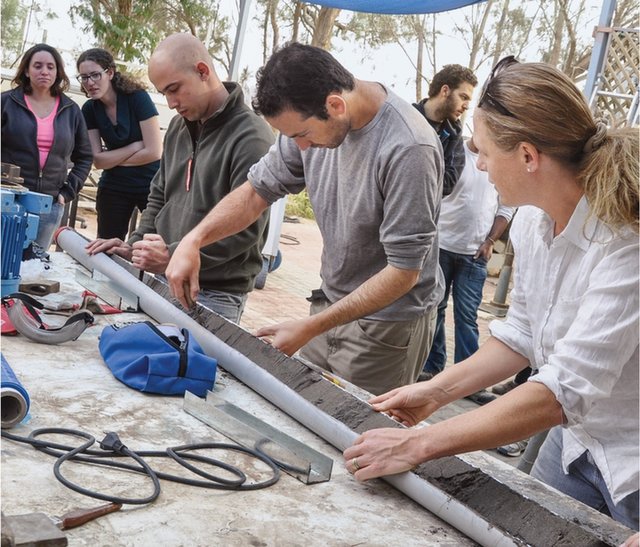Whereisyourcurrentworkfocused?
I amlookingforanddescribingcoastlinesandtsunamidepositsalloverthe world.
Tsunamisarelargeandpowerfuloceanwaves.Theygrowinsizeastheyreachtheshore.Mostarecausedbyearthquakes.Whenthishappens,biggapsmayappearontheoceanfloor.Watermovesintofillthisgap,andatsunamiforms.Tsunamiscancausemajordamageastheyrushinland,floodingcities.
Earlyinhercareer,GoodmanstudiedtheancientcityofCaesareain Israel.

abeachinCeasarea, Israel
underwaterruinsin Caesarea
DescribeyourfirstdiveatCaesarea
Oneoftheexcavation leaderstookusoutforatourofthesite.Hewantedtocheckhowourgearwasworking.Healsowantedtoseehowwellwecouldhandleourselvesbeforethedive began.
Iwastheleast-experienceddiverinthegroupandverynervous.However,oncewedroppedintothewater,weweresurroundedbymassiveblocksofancientbuildingmaterials.Atthatpoint,IwastoodistractedtothinkaboutwhetherornotIwasagoodenough diver.
Wecruisedaroundancientcementblockscoveredinplantsandcritters.Throughaspacethatfeltlikeasmallcanyon,wecouldseewoodthatwas2,000years old!
Whatwereyoulookingforduringthatseasonofexcavation?
Thoughsomewritingssuggestedthattsunamishappenedhereinthepast,wedidn’thaveproofoftsunamisonland.Oneproblemisthatanarchaeologicalsiteonacoastlinetendstohavealotofsand,pottery,shell,andgravel.Atsunamideposithasthesamethings!Thismadeithardtorealizethatsomeofthoselayerswereactuallyfroma tsunami.
Toconfirmtheirsuspicions,theteamlookedforevidenceoftsunamisbelowthe surface.

Goodmancollectsasedimentsampleinasmall bag.
Thefirstevidencewascollectedduringunderwaterarchaeologicalexcavations.Thesearedoneusingsomethingcalledawaterdredge.It’sakindofunderwatervacuum cleaner.
Theevidencethatwefoundwaslayersofmaterialsthatcamefromthedeepseamixedwithmaterialsfromtheshallowseaandbeach.Therewasalsomaterialthatcamefromtheland.Themixtureincludedpottery,shells,pebbles,microscopicorganisms,patchesofmud,andsometimesevenlargepiecesofcarvedmarble.Theonlythingthatcouldcausethismixofmaterialswouldbeverystrong waves.
Theteamthenlinkedthismixofmaterialwithwhattheyknewaboutthepast.Theydiscoveredthattheageofthedepositsmatchedtheageofthehistoricallydescribed events.
Thediscoverywasimportantforprovingthatthewrittenrecordswerenotdescribingregularstormsorotherevents,butactual tsunamis.
Howlargewasthedebrisfield?
Wedidn’tknowhowlargethedebrisfieldmightbe.Tofindout,weneededtotakecoresamples.Forthis,weneedlongpipesthatweinsertintotheseafloor.Thisisnotsoeasytodoinsand.Youmusthammerthepipeinalongtime.Thenyoumustremoveit somehow.
Howcouldweconnectanautomatichammertothetopofthepipetohammeritin?Thenhowcouldweattachropesandfloatstopullitout?Ittookalotofsketchingandthinkinguntilwegotitright.Atfirst,ittook12 daystocollecttwocoresamples.Now,wecancollectthreecoresina day!

Goodmanholdssteadyapipebeingusedtotakeacoresampleofthe seabed.


